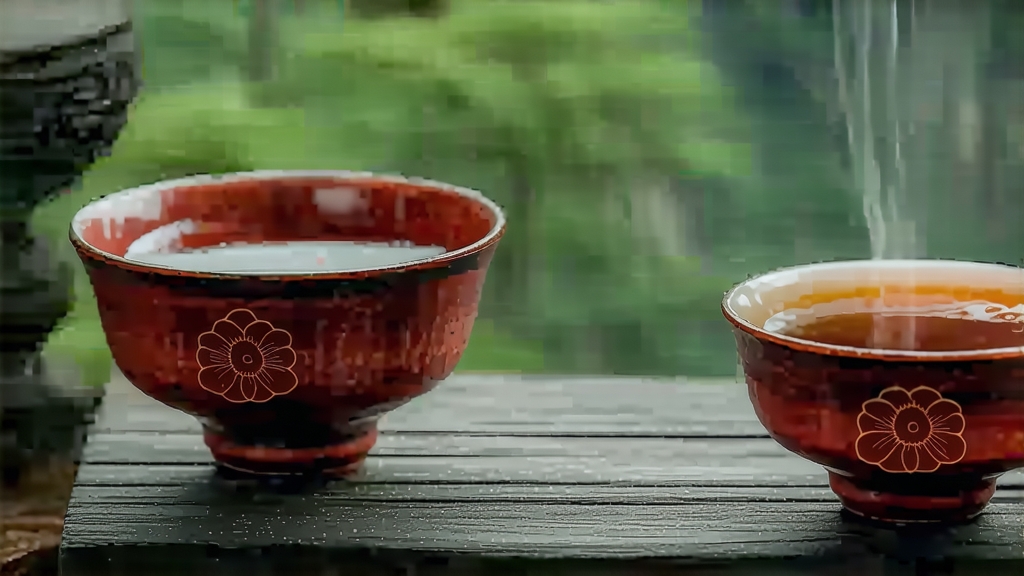
If oolong tea is the symphony of Chinese tea craftsmanship, then Da Hong Pao from the Wuyi Mountains is its most dramatic crescendo. Known in the West as “Big Red Robe,” this legendary yan-yan (“rock tea”) carries within each twisted leaf the aroma of mineral cliffs, the smoke of pinewood charcoal, and the memory of imperial tribute. For the international tea traveler, Da Hong Pao offers a liquid map of northern Fujian’s volcanic terrain, a sip that can taste simultaneously of roasted apricot, wet stone, and orchid—an impossible bouquet that only centuries of trial, error, and reverence could compose.
Historical legend and sparse court records intertwine. The most quoted tale dates to the Ming dynasty: a scholar on his way to the capital examinations fell gravely ill at the foot of Wuyi’s Nine-Dragon Gorge. Monks from the nearby Tianxin Temple brewed leaves picked from four stately bushes clinging to the cliff; the restorative infusion allowed the scholar to continue, he placed first in the exams, and returned in gratitude to drape the bushes with his own crimson robe—hence the name. Whether myth or marketing, the story cemented the tea’s prestige; by the Qing era, 350 grams of “mother-tree” Da Hong Pao reportedly outweighed its weight in gold, reserved for emperors and diplomats. Today the original six mother bushes, aged over 350 years, are preserved but no longer harvested; genetic cuttings taken in the 1980s created the vast gardens that satisfy modern demand while keeping the lineage intact.
Botanically, Da Hong Pao is not a single cultivar but a stylistic umbrella sheltering several Wuyi rock tea varieties. The original “Qi Dan” cuttings produce what purists call “pure-specimen” Da Hong Pao. Commercially, however, blenders marry Qi Dan with Rou Gui, Shui Xian, and Tie Luo Han to recreate the classic “rock rhyme” (yan yun) when individual harvests fall short. The result is a spectrum: from village-level “commodity” DHP with light toast and floral lift, to boutique “special-cliff” lots that spent three days and nights sleeping on smoldering charcoal, acquiring a deep cacao bass note and a finish that hums in the throat for minutes.
Crafting Da Hong Pao is a choreography of stress and rest. Picking occurs only in late April, when three half-mature leaves and a bud form the ideal “zhong kai mian” (medium-open face). After a brief solar withering, the leaves are shaken in bamboo drums to bruise the edges, initiating oxidation that will hover between 30 % and 50 %—the oolong sweet spot. The most critical act is the charcoal roast. In underground brick pits, the tea master tends a low-temperature ember of local hardwood for 6–10 hours, repeating the process two to four times over two months. Between roasts the tea “sleeps” in linen sacks, allowing moisture to migrate outward so the next firing can penetrate deeper without scorching. The goal is not mere smoke; it is the transformation of leaf sugars into caramelized compounds that lock in the signature “rock bone and floral heart.”
To brew Da Hong Pao well, one must respect its dual nature: sturdy minerality and fragile aromatics. Begin with spring water brought to 95 °C; boiling will exaggerate bitterness, while cooler water keeps the roast dormant. In a 120 ml gaiwan or small Yixing teapot, use 6–7 g of leaf—roughly one heaping tablespoon. The first infusion, a lightning 5-second “wash,” awakens the leaf and should be discarded. Subsequent steeps extend in five-second increments: 10 s, 15 s, 20 s… A quality cliff tea will yield eight to twelve layered infusions, each revealing a new facet. Early pours showcase orchid and honey; mid-pours unveil roasted nuts and dark fruit; later steeps taper into sweet mineral water that tastes of the very stones that nourished the roots.
Professional cupping follows a stricter ritual. Five grams of leaf are steeped for three minutes in a 110 ml white porcelain vessel, then decanted into a scent cup. The taster first evaluates “gan” (mouth-watering finish) and “hou yun” (throat charm), looking for a cooling sensation that spreads across the upper palate like menthol, a hallmark of authentic cliff terroir. The liquor